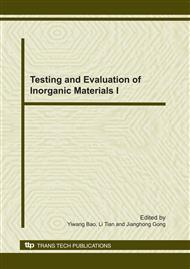p.628
p.636
p.640
p.643
p.647
p.651
p.657
p.660
p.665
Effect of Brazing Process on Alumina/Carbon Steel Interface Microstructure and Joining Strength
Abstract:
Al2O3 ceramics and carbon steels were brazed using Cu-Ti active filler metal. The weld interface was characterized using scanning electron microscopy, energy spectrometer and X-ray diffraction instrument. Effects of brazing temperature on interface microstructures and the shear strength of the joint were investigated. The results show that the optimum brazing process is brazing temperature of 1323K, holding 30 min. The brazed joints with good microstructure morphology and higher interface shear strength can be obtained under the optimum brazing process. Interface bonding zone consists of three layers: reaction layer close to the ceramic, brazing alloy layer and diffusion layer close to the steel. And Cu3Ti3O, TiFe and TiFe2 are confirmed to form in the interface bonding zone. The shear strength of the joint reaches 99MPa.
Info:
Periodical:
Pages:
647-650
Citation:
Online since:
December 2010
Authors:
Keywords:
Price:
Сopyright:
© 2011 Trans Tech Publications Ltd. All Rights Reserved
Share:
Citation:


